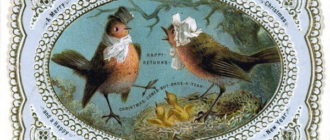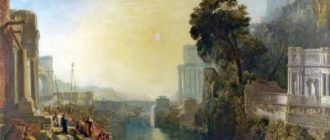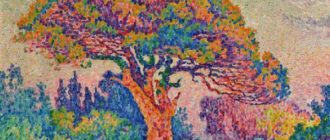
Painting Christ in the Desert by Ivan Kramskoy – the mental throwing of a person in the eternal choice between good and evil
“Christ in the Desert” is one of the most significant paintings by Ivan Nikolaevich Kramskoi. The master depicted a biblical story, which describes the forty-day fast of the Savior, who retired in the wilderness after his baptism.
Jesus sits on a stone waiting for the sun to rise. He is wearing dark clothes, his feet are bare, and his hands are clasped in a lock. The lonely figure expresses fatigue and thoughtfulness, the face is imbued with detachment and hopelessness. But at the same time, the man feels emotional strength and a willingness to take a decisive step forward towards inevitability – to the thorny path to Calvary.
The author gave the Savior an amazingly human image.
The viewer sees in front of him an ordinary middle-aged man who lives the most important moment of his life. He needs to make a choice – “go right or left”, sell his faith in God for a ruble or resist evil until the last breath. With a low horizon, the artist divided the picture into two parts, putting into this technique also a philosophical meaning. The dark rocky desert is the reality that surrounds a person during his stay on earth. The pre-dawn sky symbolizes hope for a bright future that will come after making the right decision and subsequent transformation. The dramaticness is added by the gray-lilac palette used by the painter and the photographic accuracy of the details.
Author: Ivan Nikolaevich Kramskoy (1837-1887).
Year of writing: 1872
Size: 214 x 184 cm.
Style: Realism.
Genre: Religious.
Technique: Oil painting.
Material: Canvas.
Location: State Tretyakov Gallery, Moscow.
Ivan Nikolaevich Kramskoy is a famous Russian artist who worked in the second half of the 19th century.

One of the founders of the Association of the Itinerants and the founder of Russian realism, Kramskoy urged his colleagues to constantly develop, not “ossification” in the once chosen direction. As a virtuoso portrait painter, he reproduced an impeccable external resemblance to the hero of the picture and was always able to find the “meaning of the face”, conveying the deep emotions of his character.
The work “Christ in the Desert” is written in the recognizable handwriting of the master. The first attempt to depict Christ was made by Ivan Kramskoy in 1867. The painter made a close-up of the figure of Jesus on a vertical canvas. The result obtained did not satisfy Ivan Nikolayevich – he did not manage to realize his original plan. And to include the rocky desert and the endless sky in the characters of the work.
The work was last seen in public in 1887 at the posthumous exhibition of Ivan Kramskoy, and its further fate is unknown. The artist did not give up the idea of creating an image of the Savior, which could “capture the soul of a Russian person. Therefore, when traveling in Europe Kramskoy studies the works of great masters who have touched the sacred theme. And he was looking for “his Christ”, carefully working out in his thoughts and on paper individual details of the future picture. The Tretyakov Gallery contains a sketch of the work, created by a master in the Crimea. As can be seen from the drawing, Kramskoy has already formed the general plot, endowing the sky. And the desert with characteristic features. But the character of Jesus is not yet sufficiently revealed.
The master began to create the final version at the end of 1871.
The work was presented to the general public a year later at the December exhibition of the Itinerants. The work left no one indifferent, causing a flurry of reviews, both critical and commendable. Some called it “blasphemy and mockery of the shrine”. Others described their impressions of what was taken away on canvas as “reverence, tenderness and awe.”
The painting was re-exhibited at the Moscow Traveling Exhibition in 1874, but under the title Savior in the Desert. A few years later, in 1878, the work was sent to the World Exhibition in Paris.
Pavel Tretyakov came to St. Petersburg for The Savior (as he called this work) and bought it for 6 thousand rubles. The masterpiece has become one of the most beloved paintings by the famous Russian philanthropist and the pearl of the Tretyakov Gallery, where it is still kept.
The painting “Christ in the Desert” by Ivan Kramskoy is a vivid example of how one work of art can split society into several groups representing conflicting opinions. Even today, the masterpiece evokes strong emotions in the viewer, attracting to itself with the depth of philosophical reasoning and incredible realism of the plot.






